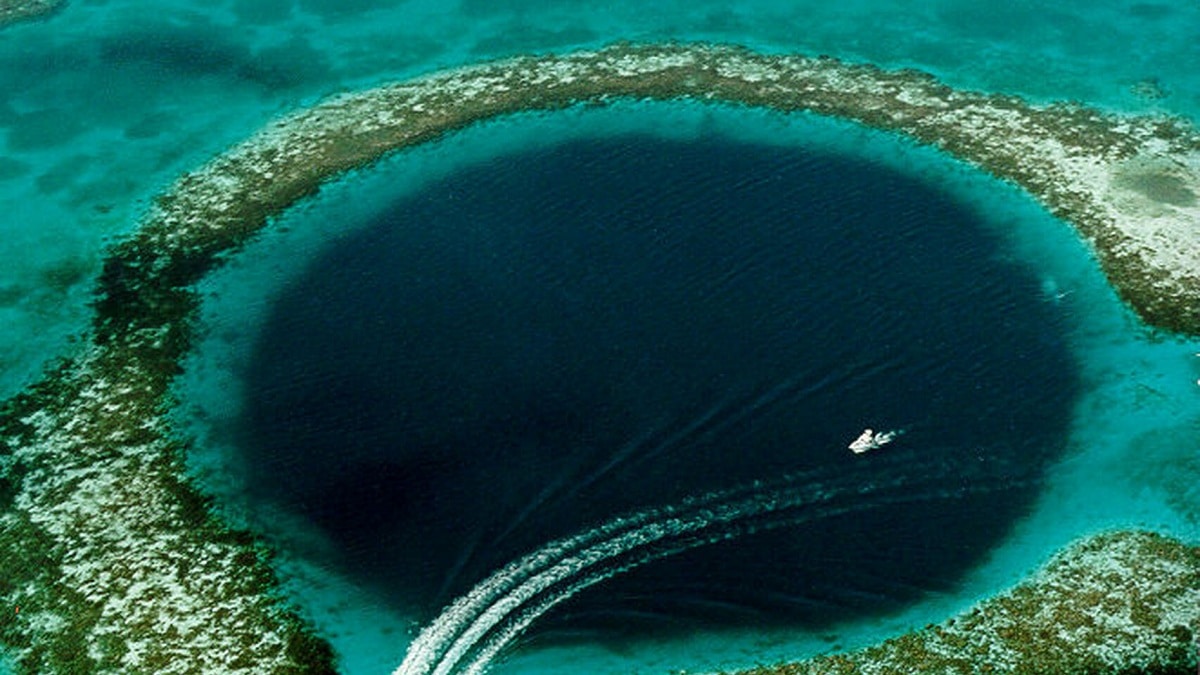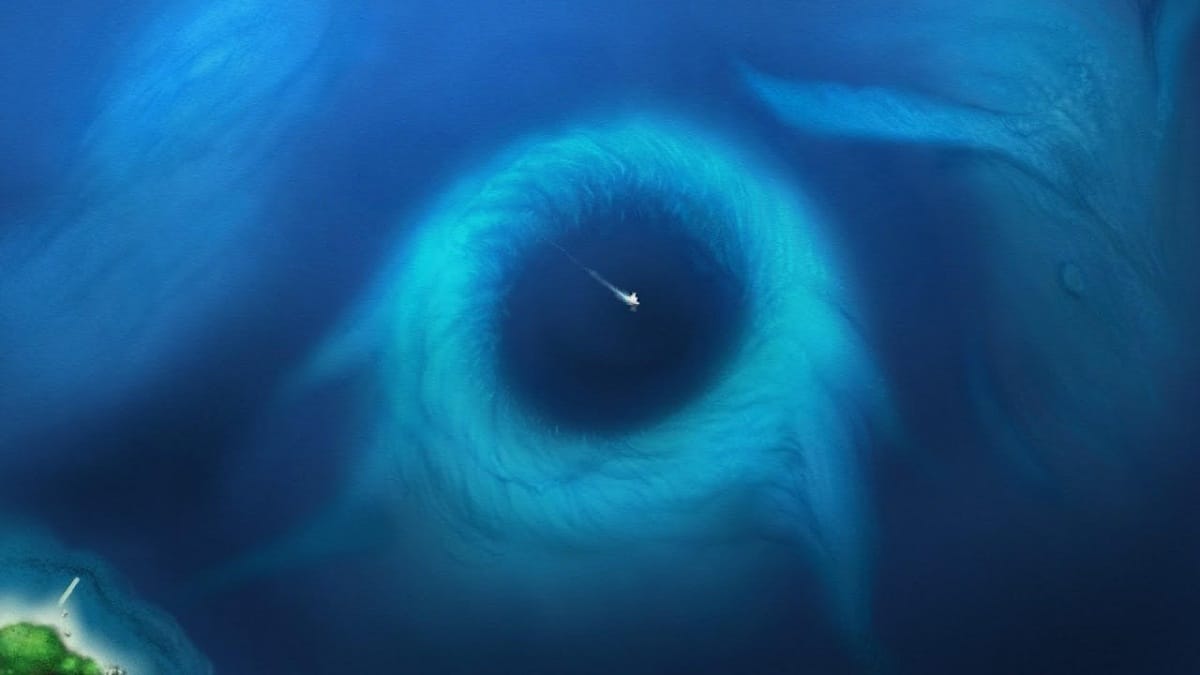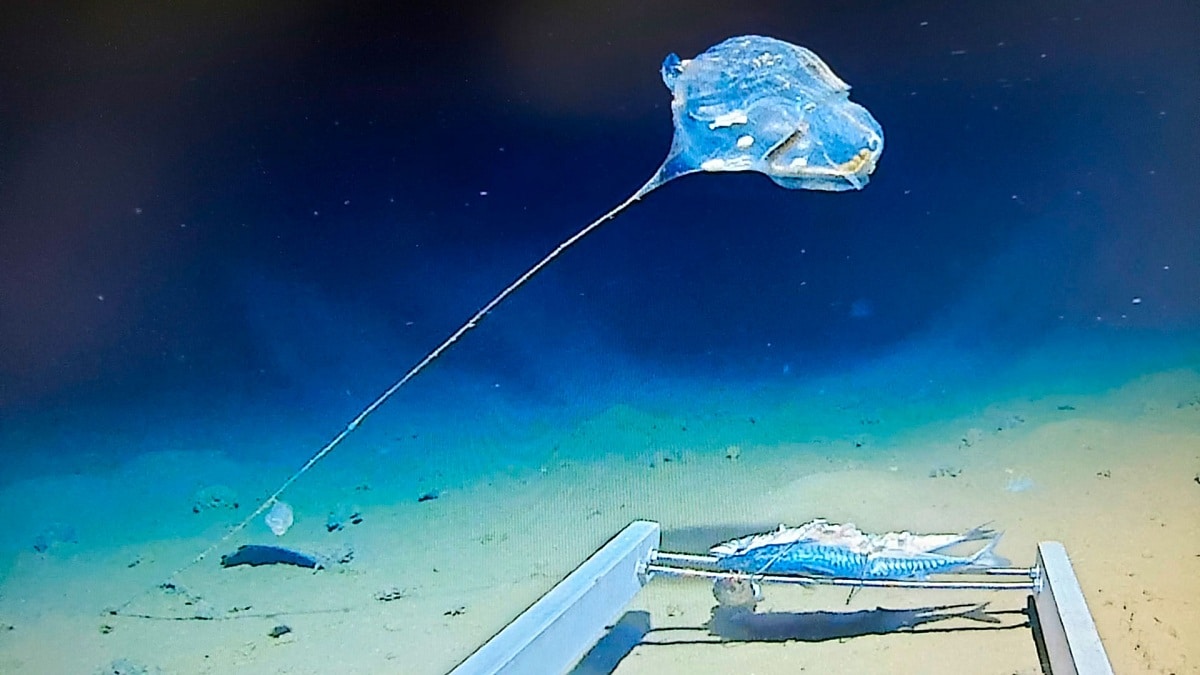
When we talk about the depths of hell on our planet we are talking about the point closest to the center of the earth. In this case, although it is not the closest point, it is the deepest point recorded at about 11.000 meters deep. We talk about the Mariana Trench. The human being has been able to reach almost the end of these graves, but it has never completely arrived.
In this article we are going to tell you everything you need to know about the Mariana Trench and its curiosities.
A place in hell

Throughout our planet there are many things spread throughout the world. However, the Mariana Trench has become the deepest place on the planet. Here we have a pressure and more than 1000 atmospheres, just 4 degrees of temperature and total darkness. Being so deep, sunlight does not reach here. It seems the most daunting hell that we can imagine and is called the center of the planet or hell. Although it is in the deepest part of the planet, we can find life. It has a crescent shape and is found east of the Mariana Islands in the Philippines.
In this pit is the deepest point of the earth, although it is not the closest to its center due to the irregularity of our geoid. It has a depth of more than 11.000 meters below the earth's surface. If we put Mount Everest inside, it would still take a few more meters to get close to the surface. In this bed the human being has made numerous investigations. The first of them was in 1960. Here the famous Aguste Piccard, together with Don Walsh reach a depth of 10.911 meters. Later, in 2012, the filmmaker James Cameron managed to descend to 10.908 meters. The record was set by Victor Vescovo reaching a depth of 10.928 meters. The impression of this man was quite disappointing. And he was able to see the remains of human contamination even in the deepest point of the ocean.
In this pit there is a large amount of plastic pollution, and although it is the deepest place on earth, being a barren scene and almost side, pollution is present here.
What lives in the Mariana Trench

The journey to the bottom of the Mariana Trench is like a journey towards immense solitude. Although we are free from the presence of the human being at these depths, we are not all alone. Although few beings are capable of surviving these extreme conditions, there are some that do. In 2011 it was discovered that at the bottom of the abyss were some xenophilous beings. This means that they are living things similar to sea sponges and other animals at first glance.
In order to survive in these environments, some very sophisticated evolutionary adaptations are needed. They are microorganisms organized in pseudo structures. This means that they have some organized parties that appear to be more complex than they really are. They are highly specialized to be able to live in these almost impossible conditions for life. By having this type of adaptation, they are extreme, it has become very delicate beings and there has not been a single collection to study it in life. At the moment, it seems like an impossible task to be able to study these animals alive in an efficient way.
Much of what we know of these organisms is with relatives known as Xenophyophorea. It is a class of protists, which are unicellular organisms among which are amoebae. These xenophiophores are animals that is extended to the seabed at a depth greater than 6.000 meters. In this class of protists we find quite difficult animals to handle that still remain a mystery in many respects.
Due to the large number of these animals, marine biologists try to speculate the role of these ecosystems. It is thought that they may have a fundamental role in the cycle of sediments that settle to the bottom. In addition to xenophiophores, we find some microorganisms that inhabit the seabed. It is difficult to obtain samples of these organisms since they hardly resist changes in the extreme environmental conditions. Having marine adaptations of these complex ecosystems is difficult for them to adapt to others.
Species of the Mariana Trench

If we went a little deeper, we found some deeper fish, among which we found some with a gelatinous tissue. This tissue is very inconsistent and collapses when the pressure and temperature are not that of the Mariana Trench where they live. Some of the species that inhabit these deeper places make this place seem spectacularly lonely despite its existence.
Unlike what occurs in other deeper investments in the morning pit, no bioturbations are observed. Bioturbations are nothing more than some modifications in the terrain formed by the action of animals. For example, we find bioturbations caused by worms or holothurians that can shape the terrain with their biological activity. The largest animals that live at a depth of about 8.000 meters are amphipods. They are animals with an appearance similar to flames and belong to the group of crustaceans.
Some species of cephalopods such as squids called giant squids may reach these depths. It is not yet known for sure, but they are animals adapted to extreme conditions. Once we went even deeper, we found cnidarians, including jellyfish and hydras. We also found some toothy, blind fish, some long-legged crustaceans, and some odd-looking sea cucumbers.
Between the hadal and warn zone located at a depth between 4.000 and 6.000 meters we have some animals with the appearance of aliens. Here are the most terrifying signs of our nature.
I hope that with this information you can learn more about the Mariana Trench and its characteristics.